Jeffrey A Rogers
age ~77
from Tucson, AZ
- Also known as:
-
- Jeffrey Ashton Rogers
- Aetis Jeffrey Rogers
- Artist Jeffrey Rogers
- Jeffrey Rogers Artist
- Jeffrey Rogers Aetis
- Ja Rogers
- Jeffreya Rogers
- Jeff Rogers
- T Jeffrey Rogers
- Jeffrey Rogers T
- Phone and address:
- 4860 N Placita Lirio, Tucson, AZ 85749
Jeffrey Rogers Phones & Addresses
- 4860 N Placita Lirio, Tucson, AZ 85749
- 3523 Haven Ave, Menlo Park, CA 94025 • (650)3645997
- San Mateo, CA
- Palo Alto, CA
Lawyers & Attorneys
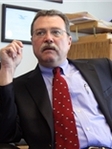
Jeffrey J Rogers, Tucson AZ - Lawyer
view sourceAddress:
Law Offices of Jeffrey J. Rogers, P.L.C.
177 North Church Avenue. Suite 700, Tucson, AZ 85701
(520)6244700 (Office), (520)6244796 (Fax)
177 North Church Avenue. Suite 700, Tucson, AZ 85701
(520)6244700 (Office), (520)6244796 (Fax)
Licenses:
Arizona - Active 1993
Education:
University of Arizona College of Law
Degree - JD - Juris Doctor - Law
Graduated - 1993
Degree - JD - Juris Doctor - Law
Graduated - 1993
Specialties:
Criminal Defense - 34%
Administrative Law - 33%
Personal Injury - 33%
Administrative Law - 33%
Personal Injury - 33%
Associations:
American Bar Association - Member
National Association of Criminal Defense Lawyers - Member
Pima County Bar Association
National Association of Criminal Defense Lawyers - Member
Pima County Bar Association
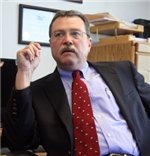
Jeffrey J. Rogers, Tucson AZ - Lawyer
view sourceOffice:
Law Offices of Jeffrey J. Rogers, P.L.C.
177 North Church Avenue, Suite 700, Tucson, AZ 85701
177 North Church Avenue, Suite 700, Tucson, AZ 85701
Phone:
(520)5055182 (Phone), (520)6244796 (Fax)
Specialties:
Federal Criminal Defense
State Criminal Defense
Misdemeanors
Felonies
Personal Injury
Juvenile Crimes
Drug Crimes
Public Law
Administrative Law
State Criminal Defense
Misdemeanors
Felonies
Personal Injury
Juvenile Crimes
Drug Crimes
Public Law
Administrative Law
Memberships:
Pima County and American Bar Associations
National Association of Criminal Defense Lawyers
Arizona Attorneys for Criminal Justice.
National Association of Criminal Defense Lawyers
Arizona Attorneys for Criminal Justice.
ISLN:
900932401
Admitted:
1993, Arizona and U.S. District Court, District of Arizona
U.S. Court of Appeals, Ninth Circuit
U.S. Supreme Court
U.S. Court of Appeals, Ninth Circuit
U.S. Supreme Court
University:
Indiana University
University of Arizona, B.A., 1989
University of Arizona, B.A., 1989
Law School:
University of Arizona, J.D., summa cum laude, 1993
Links:
Site
Biography:
Order of the Coif. Recipient, DeConcini McDonald Highest Academic Achievement Award, 1993. Executive Note Editor, Arizona Law Review. Author, "Rule 68 and Equitable Relief: A Common Sense Solution", 3...

Jeffrey Rogers - Lawyer
view sourceSpecialties:
Antitrust & Trade Law
Consumer Law
Communications & Media
Communications & Media
Corporate & Incorporation
Employee Benefits
Consumer Law
Communications & Media
Communications & Media
Corporate & Incorporation
Employee Benefits
ISLN:
1000533856
Admitted:
2003
Law School:
St Mary's University of San Antonio School of Law, JD - Juris Doctor, 2003

Jeffrey Rogers - Lawyer
view sourceISLN:
1000007244
Admitted:
2002
University:
Whittier Coll SOL, CA; San Diego State Univ, San Diego, CA

Jeffrey Rogers - Lawyer
view sourceSpecialties:
Family Law
Criminal Defense
Personal Injury
Corporate Law
Criminal Defense
Personal Injury
Corporate Law
ISLN:
902056235
Admitted:
1983
University:
Southern Arkansas University, B.B.A., 1980
Law School:
University of Arkansas-Little Rock, J.D., 1983

Jeffrey Rogers, Tucson AZ - Lawyer
view sourceAddress:
177 N Church Ave, Tucson, AZ 85701
Phone:
(520)6244700 (Phone), (520)6244796 (Fax)
Specialties:
Criminal Law
DUI & DWI
Personal Injury
Car Accidents
DUI & DWI
Personal Injury
Car Accidents
Jurisdiction:
Arizona
Education:
U OF A
Memberships:
Arizona State Bar
License Records
Jeffrey T. Rogers
License #:
E-2822 - Expired
Category:
Engineering Intern
Jeffrey Rogers
License #:
MT037483T - Expired
Category:
Medicine
Type:
Graduate Medical Trainee
Jeffrey Scott Rogers
License #:
OT002832T - Expired
Category:
Osteopathic Medicine
Type:
Graduate Osteopathic Trainee
Isbn (Books And Publications)


A Grammar for Biblical Hebrew Handbook/Answer Keys and Study Guide: Handbook Answer Keys and Study Guide
view sourceAuthor
Jeffrey S. Rogers
ISBN #
0687156858

Name / Title
Company / Classification
Phones & Addresses
Owner
CRANIOSACRAL & ZEN SHIATSU THERAPIES OF TUCSON
Manual theraphy
Manual theraphy
1212 W Saint Clair Ct, Tucson, AZ 85745
(520)9905865
(520)9905865
Manager
DPC OF PIMA COUNTY, LLC
4639 E 1 St, Tucson, AZ 85711
177 Church Ave #700, Tucson, AZ 85701
177 Church Ave #700, Tucson, AZ 85701
Manager
Jeffrey Rogers
Mfg Pressed/Blown Glass · Gift Shops
Mfg Pressed/Blown Glass · Gift Shops
3509 Hvn Ave, Menlo Park, CA 94025
1660 S Res Loop, Tucson, AZ 85710
3523 Hvn Ave, Menlo Park, CA 94025
(650)3645997, (650)3670694
1660 S Res Loop, Tucson, AZ 85710
3523 Hvn Ave, Menlo Park, CA 94025
(650)3645997, (650)3670694
JEFFREY J. ROGERS, P.L.C
177 N Church Ave #700, Tucson, AZ 85701
Law Office of Jeffrey J Rogers Pl
Legal Services Office
Legal Services Office
177 N Church Ave, Tucson, AZ 85701
(520)6244700
(520)6244700
JSR EXPRESS, INC
J&K INVESTMENT ENTERPRISES, LLC
Assistant Principal
Oakland Unified School District
Elementary/Secondary School
Elementary/Secondary School
12250 Skyline Blvd, Oakland, CA 94619
(510)8793060
(510)8793060
Medicine Doctors

Jeffrey Rogers
view sourceSpecialties:
General Surgery, Transplant Surgery
Work:
Wake Forest Baptist Health Transplant Surgery
140 Charlois Blvd FL 2, Winston Salem, NC 27103
(336)7162255 (phone), (336)7135677 (fax)
140 Charlois Blvd FL 2, Winston Salem, NC 27103
(336)7162255 (phone), (336)7135677 (fax)
Education:
Medical School
Albert Einstein College of Medicine at Yeshiva University
Graduated: 1990
Albert Einstein College of Medicine at Yeshiva University
Graduated: 1990
Procedures:
Kidney Transplant
Small Bowel Resection
Small Bowel Resection
Conditions:
Chronic Renal Disease
Heart Failure
Liver Cancer
Ventral Hernia
Heart Failure
Liver Cancer
Ventral Hernia
Languages:
English
Spanish
Spanish
Description:
Dr. Rogers graduated from the Albert Einstein College of Medicine at Yeshiva University in 1990. He works in Winston-Salem, NC and specializes in General Surgery and Transplant Surgery.

Jeffrey K. Rogers
view sourceSpecialties:
Internal Medicine
Work:
Beacon Health Internal Medicine
3370 Jenkins Rd, Chattanooga, TN 37421
(423)6488005 (phone), (423)6488006 (fax)
3370 Jenkins Rd, Chattanooga, TN 37421
(423)6488005 (phone), (423)6488006 (fax)
Education:
Medical School
Kansas City University of Medicine and Biosciences College of Osteopathic Medicine
Graduated: 1991
Kansas City University of Medicine and Biosciences College of Osteopathic Medicine
Graduated: 1991
Procedures:
Cardiac Stress Test
Arthrocentesis
Continuous EKG
Destruction of Benign/Premalignant Skin Lesions
Electrocardiogram (EKG or ECG)
Pulmonary Function Tests
Skin Tags Removal
Vaccine Administration
Arthrocentesis
Continuous EKG
Destruction of Benign/Premalignant Skin Lesions
Electrocardiogram (EKG or ECG)
Pulmonary Function Tests
Skin Tags Removal
Vaccine Administration
Conditions:
Acute Pharyngitis
Acute Sinusitis
Acute Upper Respiratory Tract Infections
Bronchial Asthma
Contact Dermatitis
Acute Sinusitis
Acute Upper Respiratory Tract Infections
Bronchial Asthma
Contact Dermatitis
Languages:
English
Description:
Dr. Rogers graduated from the Kansas City University of Medicine and Biosciences College of Osteopathic Medicine in 1991. He works in Chattanooga, TN and specializes in Internal Medicine. Dr. Rogers is affiliated with CHI Memorial Hospital.

Jeffrey J. Rogers
view sourceSpecialties:
Anesthesiology
Work:
Kaiser Permanente Medical GroupKaiser Permanente Anesthesiology
9300 Imperial Hwy, Downey, CA 90242
(562)4613000 (phone), (562)6579953 (fax)
9300 Imperial Hwy, Downey, CA 90242
(562)4613000 (phone), (562)6579953 (fax)
Education:
Medical School
University of California, San Diego School of Medicine
Graduated: 1984
University of California, San Diego School of Medicine
Graduated: 1984
Languages:
English
Description:
Dr. Rogers graduated from the University of California, San Diego School of Medicine in 1984. He works in Downey, CA and specializes in Anesthesiology.

Jeffrey S. Rogers
view sourceSpecialties:
Anesthesiology
Work:
Orthopedic Associates Of Southwest Ohio
4160 Little York Rd STE 10, Dayton, OH 45414
(937)4159100 (phone), (937)4159191 (fax)
Orthopedic Associates Of Southwest Ohio
7677 Yankee St STE 110, Dayton, OH 45459
(937)4280400 (phone), (937)4388630 (fax)
4160 Little York Rd STE 10, Dayton, OH 45414
(937)4159100 (phone), (937)4159191 (fax)
Orthopedic Associates Of Southwest Ohio
7677 Yankee St STE 110, Dayton, OH 45459
(937)4280400 (phone), (937)4388630 (fax)
Education:
Medical School
Philadelphia College of Osteopathic Medicine
Graduated: 1989
Philadelphia College of Osteopathic Medicine
Graduated: 1989
Languages:
English
Description:
Dr. Rogers graduated from the Philadelphia College of Osteopathic Medicine in 1989. He works in Centerville, OH and 1 other location and specializes in Anesthesiology. Dr. Rogers is affiliated with Grandview Medical Center, Kettering Medical Center, Miami Valley Hospital, Southview Hospital and Wilson Memorial Hospital.

Jeffrey Phillip Rogers
view sourceSpecialties:
Internal Medicine
Cardiovascular Disease
Cardiology
Cardiovascular Disease
Cardiology
Education:
University of Illinois at Chicago (1969)
Us Patents
-
Operation And Control Of Mechanical Devices Using Shape Memory Materials And Biometric Information
view source -
US Patent:20070132551, Jun 14, 2007
-
Filed:Oct 11, 2006
-
Appl. No.:11/580269
-
Inventors:Forrest Mozer - Berkeley CA, US
Todd Mozer - Los Altos Hills CA, US
Jeffrey Rogers - Lake Oswego OR, US
Tetsuro Hirouji - Milpitas CA, US
Alec Plauche - Berkeley CA, US
Robert Duck - San Francisco CA, US -
Assignee:Sensory, Inc., a California Corporation - Sunnyvale CA
-
International Classification:G05B 19/00
-
US Classification:340005520, 382115000, 704270000, 070277000
-
Abstract:In one embodiment the present invention includes a biometric information recognizer and a shape memory material. The biometric information recognizer recognizes biometric information (such as speech) and signals the shape memory material with a current. The current causes the shape memory material to change shape, thereby reconfiguring a mechanical device. Such mechanical device may include a lock. In such manner, the lock may be isolated from external tampering (such as physical stressing) yet receptive to biometric information for controlling access.
-
Devices And Methods For Optical Communication In A Rotary Platform
view source -
US Patent:20200083956, Mar 12, 2020
-
Filed:Nov 13, 2019
-
Appl. No.:16/682850
-
Inventors:- Mountain View CA, US
Jeffrey Rogers - Sunnyvale CA, US -
International Classification:H04B 10/116
B60Q 1/50 -
Abstract:In one example, a device includes a first platform having a first side and a second platform having a second side that overlaps the first side. The device also includes an actuator that rotates the first platform relative to the second platform. The device also includes a plurality of light sources mounted to the first platform in a substantially circular arrangement around the axis of rotation of the first platform. The plurality of light sources emit a plurality of light beams such that respective adjacent light beams intersect at least at a predetermined distance to the first side. The first side remains at least at the predetermined distance to the second side in response to the actuator rotating the first platform. The device also includes a light detector mounted to the second platform and positioned to at least partially overlap at least one of the plurality of light beams.
-
Altering Physiological Signals Based On Patient Movement
view source -
US Patent:20180296163, Oct 18, 2018
-
Filed:Jul 27, 2015
-
Appl. No.:14/809901
-
Inventors:- Mountain View CA, US
Jeffrey L. Rogers - San Carlos CA, US -
International Classification:A61B 5/00
A61B 5/024
A61B 5/0205
A61B 5/08
A61B 5/026
A61B 5/11
A61B 5/021 -
Abstract:This document describes ways in which to alter physiological signals to address corrupt, noisy, or otherwise faulty data. By so doing, accuracy and robustness in sensing and assessing a patient's cardiovascular health can be improved. These improved assessments permit better measures of health, such as relevant hemodynamics understood by heart rates, heart rate variability, cardiac arrhythmias, blood pressures, pulse-wave velocities, arterial stiffness, cardiac valve timing, thoracic fluids, ballistocardiogram force, photo-plethysmograms, blood oxygenation, and pressure-volume loops.
-
Optical Central Venous Pressure Measurement
view source -
US Patent:20180177464, Jun 28, 2018
-
Filed:May 19, 2015
-
Appl. No.:14/715793
-
Inventors:- Mountain View CA, US
James Moad Reid - Mountain View CA, US
Jeffrey L. Rogers - San Carlos CA, US -
International Classification:A61B 5/00
A61B 5/021
A61B 5/107
A61B 5/0205 -
Abstract:This document describes optical central venous pressure measurement. To determine the central venous pressure (CVP) of a person optically, video of a right side of the person's neck is captured. By way of example, a medical professional records a video of the right side of the person's neck using a smartphone. The right side of the person's neck is captured because it is where the person's external and internal jugular veins are located and pulsatile motions that are usable to measure CVP occur in those veins. The video is then processed according to video motion amplification techniques to generate a reconstructed video of the right side of the person's neck. In the reconstructed video, the pulsatile motion of the person's venous system that occurs at the right side of their neck is visually amplified. Using the reconstructed video, measurements are made of a distance between a peak of the visually-amplified pulsatile motion and an anatomical feature of the person. The measured distance between the peak of the visually-amplified pulsatile motion and the anatomical feature is used to determine CVP of the person. These techniques enable CVP to be determined without relying on estimates made by medical professionals.
-
Assessing Cardiovascular Function Using An Optical Sensor
view source -
US Patent:20180000354, Jan 4, 2018
-
Filed:Sep 14, 2017
-
Appl. No.:15/704615
-
Inventors:- Mountain View CA, US
Jeffrey L. Rogers - San Carlos CA, US -
Assignee:Google Inc. - Mountain View CA
-
International Classification:A61B 5/0205
A61B 5/021
A61B 5/00
A61B 5/024
A61B 5/11
A61B 5/103 -
Abstract:This document describes assessing cardiovascular function using an optical sensor, such as through sensing relevant hemodynamics understood by pulse transit times, blood pressures, pulse-wave velocities, and, in more breadth, ballistocardiograms and pressure-volume loops. The techniques disclosed in this document use various optical sensors to sense hemodynamics, such as skin color and skin and other organ displacement. These optical sensors require little if any risk to the patient and are simple and easy for the patient to use.
-
Assessing Cardiovascular Function Using An Optical Sensor
view source -
US Patent:20180000355, Jan 4, 2018
-
Filed:Sep 14, 2017
-
Appl. No.:15/704825
-
Inventors:- Mountain View CA, US
Jeffrey L. Rogers - San Carlos CA, US -
Assignee:Google Inc. - Mountain View CA
-
International Classification:A61B 5/0205
A61B 5/021
A61B 5/00
A61B 5/024
A61B 5/11
A61B 5/103 -
Abstract:This document describes assessing cardiovascular function using an optical sensor, such as through sensing relevant hemodynamics understood by pulse transit times, blood pressures, pulse-wave velocities, and, in more breadth, ballistocardiograms and pressure-volume loops. The techniques disclosed in this document use various optical sensors to sense hemodynamics, such as skin color and skin and other organ displacement. These optical sensors require little if any risk to the patient and are simple and easy for the patient to use.
-
Health State Trends For A Consistent Patient Situation
view source -
US Patent:20170351827, Dec 7, 2017
-
Filed:Jan 27, 2016
-
Appl. No.:15/008295
-
Inventors:- Mountain View CA, US
Jeffrey L. Rogers - San Carlos CA, US -
International Classification:G06F 19/00
-
Abstract:This document describes techniques and apparatuses enabling determination of health state trends for a consistent patient situation. Various noninvasive health monitors can be used to sense a patient's situation and health states, including disease progression, at those states. These noninvasive health monitors may also act passively and in a patient's normal course of life, which enhances many patient's desire to submit to monitoring, as well as increase consistency of use, as in many cases the patient does little or nothing to cause his or her health monitoring and health-trend determination. With health states determined for a consistent patient situation, more accurate and more robust health trends can be determined.
-
Synchronizing Cardiovascular Sensors For Cardiovascular Monitoring
view source -
US Patent:20160338599, Nov 24, 2016
-
Filed:May 22, 2015
-
Appl. No.:14/720632
-
Inventors:- Mountain View CA, US
Jeffrey L. Rogers - San Carlos CA, US -
International Classification:A61B 5/026
A61B 5/021
A61B 5/00
A61B 5/0265 -
Abstract:This document describes synchronizing cardiovascular sensors for cardiovascular monitoring, such as through sensing relevant hemodynamics understood by pulse transit times, blood pressures, pulse-wave velocities, and, in more breadth, electrical conduction properties, cardiac rhythms, thoracic impedance, ballistocardiograms and pressure-volume loops. The techniques disclosed in this document use various cardiovascular sensors to sense hemodynamics, such as skin color and skin and other organ displacement. These cardiovascular sensors require little if any risk to the patient and are simple and easy for the patient to use.
Youtube
News

Scientists unveil gibbon genome, reveal secrets of our endangered ape relatives
view source- "We now have whole genome sequences for all the great apes and, with this work, also the small apes - gibbons," said Jeffrey Rogers, a primate genetics researcher at the Human Genome Sequencing Center at Baylor College of Medicine in Houston.
- Date: Sep 11, 2014
- Source: Google

Understanding Gibbon Evolution: The 'Exploding' Genome
view source- Now, Jeffrey Rogers of the Human Genome Sequencing Center and lead author of the study explained that finding parallels between the human and gibbon genome can help us better understand human biology and evolution.
- Date: Sep 11, 2014
- Source: Google

What Do Small Businesses Need Banks for, Anyway?
view source- Zazma president Jeffrey Rogers, meanwhile, says that sending small business loans directly to suppliers helps the company evaluate risk. Zazmas appeal to borrowers is that it makes loans banks wont consider while simplifying the process of transferring funds. Electronic payments with big data is
- Date: Sep 10, 2013
- Category: Business
- Source: Google

Gabrielle Giffords attends campaign concert in Tucson
view source- Jeffrey Rogers, chairman of the Pima County Democratic Party, said he believes voters will be comforted by the mild-mannered, soft-spoken Barber. But Rogers did express surprise that Barber didn't rely on Giffords more for the campaign.
- Date: Jun 10, 2012
- Source: Google

Gorilla DNA offers clues about humans too
view source- for which, if you want to find the closest sequence to humans, you wont necessarily look at chimpanzees. In a few cases, youll look at gorillas," said Jeffrey Rogers, a geneticist at Baylor College of Medicine in Houston and co-author of an editorial on the research, also published in Nature.
- Date: Mar 08, 2012
- Category: Sci/Tech
- Source: Google

Gorilla DNA offers clues about humans too
view source- genes for which, if you want to find the closest sequence to humans, you won't necessarily look at chimpanzees. In a few cases, you'll look at gorillas," said Jeffrey Rogers, a geneticist at Baylor College of Medicine in Houston and coauthor of an editorial on the research, also published in Nature.
- Date: Mar 08, 2012
- Source: Google

Humans aping gorillas? Some DNA surprisingly similar, says study shedding ...
view source- It reveals a closer connection between our genome and that of the gorilla than was previously appreciated, Richard Gibbs and Jeffrey Rogers of the Baylor College of Medicine wrote in an editorial accompanying the work published in Thursdays issue of the journal Nature.
- Date: Mar 07, 2012
- Category: Sci/Tech
- Source: Google
Googleplus
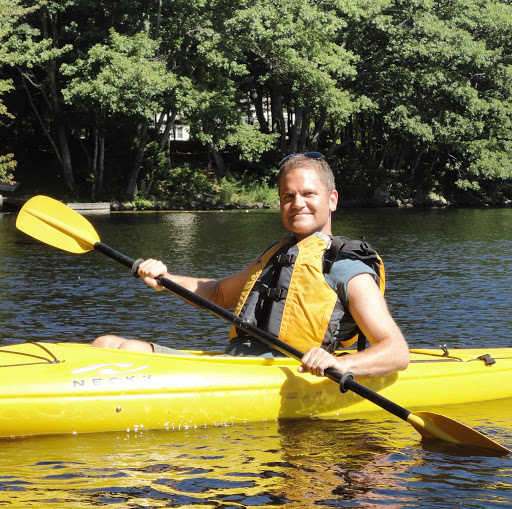
Jeffrey Rogers
Work:
National Public Radio - Senior Producer (1993)
KCRW - Senior Producer (2011-2012)
KCRW - Senior Producer (2011-2012)
Education:
University of Virginia - English, Art History
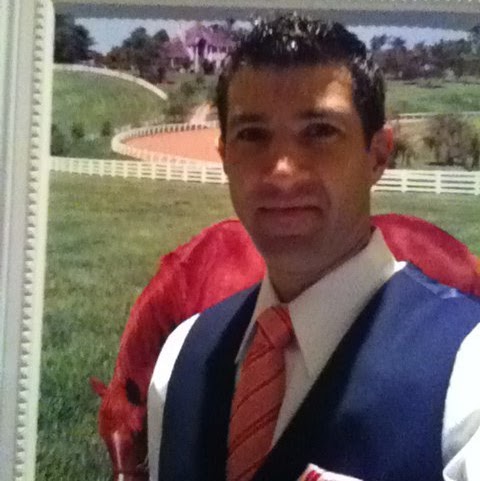
Jeffrey Rogers
Education:
University of Kentucky - Finance, Capitol College - Masters

Jeffrey Rogers
Work:
J.L.R Ministries International - CEO/Founder
Education:
Gadsden State Community College - Buisness

Jeffrey Rogers
Tagline:
Practice Excellence in All Things!

Jeffrey Rogers

Jeffrey Rogers
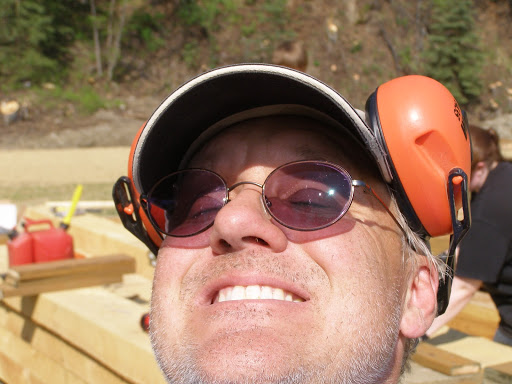
Jeffrey Rogers
Tagline:
Lodge Advisor of Toontuk Lodge
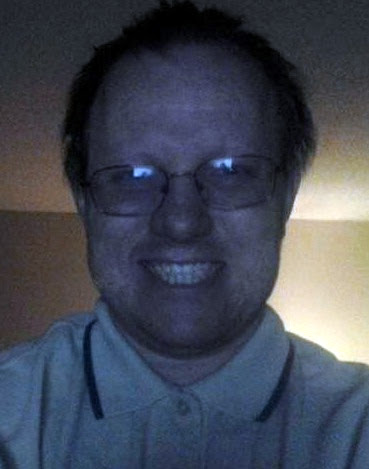
Jeffrey Rogers
Flickr
Myspace
Plaxo

Jeffrey Rogers
view sourceSalisbury, MDSystem Administrator at Pohanka Automotive Group I have been in the IT field for about 10 years. I started out working for a e-commerce web-hosting company back in January of 1999. I was apart of the support... I have been in the IT field for about 10 years. I started out working for a e-commerce web-hosting company back in January of 1999. I was apart of the support desk team helping customers with basic html coding and getting customers away from using AOL as their web browser. During that time while...

Jeffrey Rogers
view sourceOwner at Breakfast Hill Chiropractic
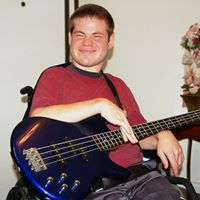
Jeffrey Lee Rogers
view source
Jeffrey Don Rogers
view source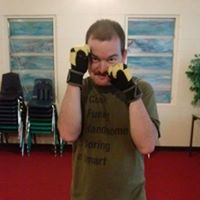
Jeffrey Woodall Rogers
view source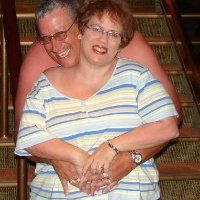
Jeffrey Lynn Rogers
view source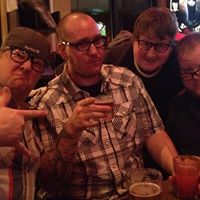
Jeffrey Ryan Rogers
view source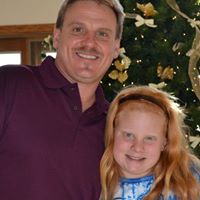
Jeffrey Lloyd Rogers
view source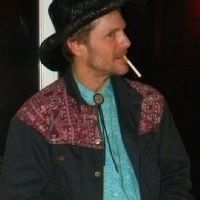
Jeffrey David Rogers
view source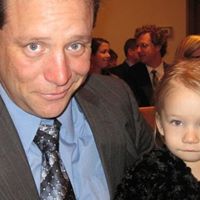
Jeffrey Alan Rogers
view sourceClassmates

Jeffrey Rogers
view sourceSchools:
Penn Foster Career School Scranton PA 2005-2009
Community:
Theresa Yester, Merton Reynolds, Charlotte Rainwater, William Riverin, Brandy Heflin

Jeffrey Rogers
view sourceSchools:
St. George High School Evanston IL 1962-1966
Community:
Francis Parrilli, Rick Royce, Mark Mounsey, John Adamson, Jacqueline Fallucco

Jeffrey Rogers
view sourceSchools:
Oxford High School Oxford ME 1984-1988
Community:
Ashley Barnett, George Spaulding, Victory Gilbert

Jeffrey Rogers
view sourceSchools:
Whitehall - Coplay High School Coplay PA 1977-1981

Jeffrey Rogers
view sourceSchools:
Penn Foster Career School Scranton PA 2004-2008
Community:
Theresa Yester, Merton Reynolds, Charlotte Rainwater, William Riverin, Brandy Heflin

Jeffrey Rogers
view sourceSchools:
George County High School Lucedale MS 1976-1980

Jeffrey Rogers
view sourceSchools:
North Collegiate High School Barrie Morocco 1973-1977
Community:
Paul Watts, Shawn Conroy, Tom Newell, Donna Livingston
Get Report for Jeffrey A Rogers from Tucson, AZ, age ~77



















